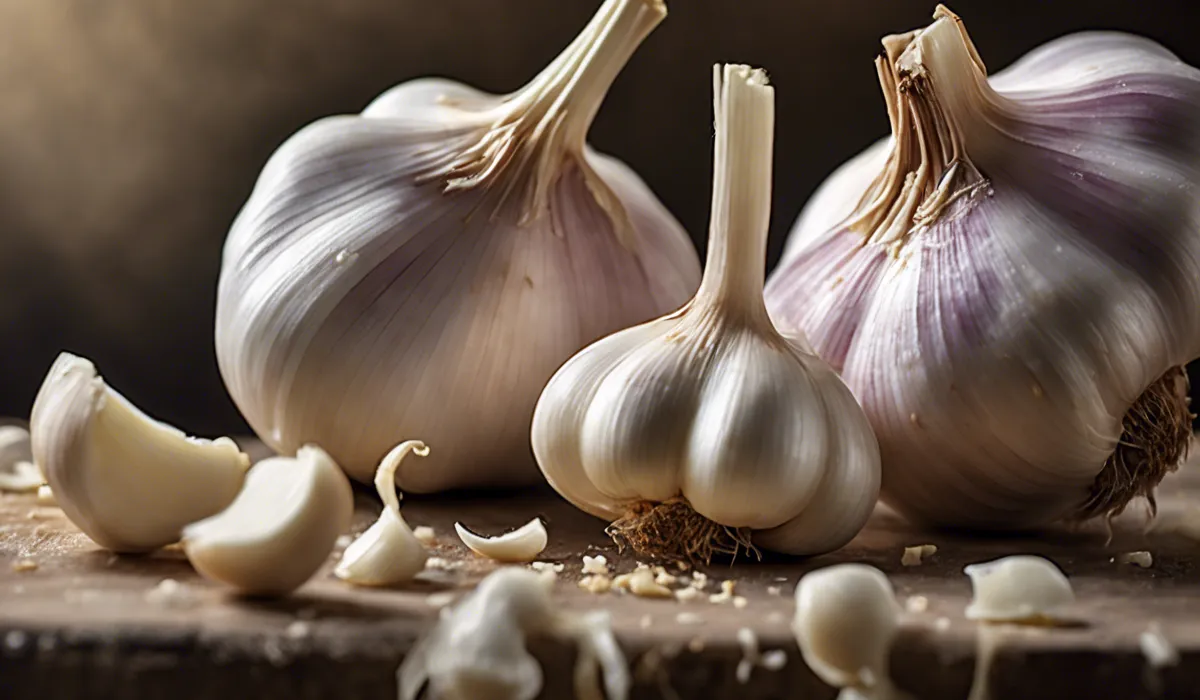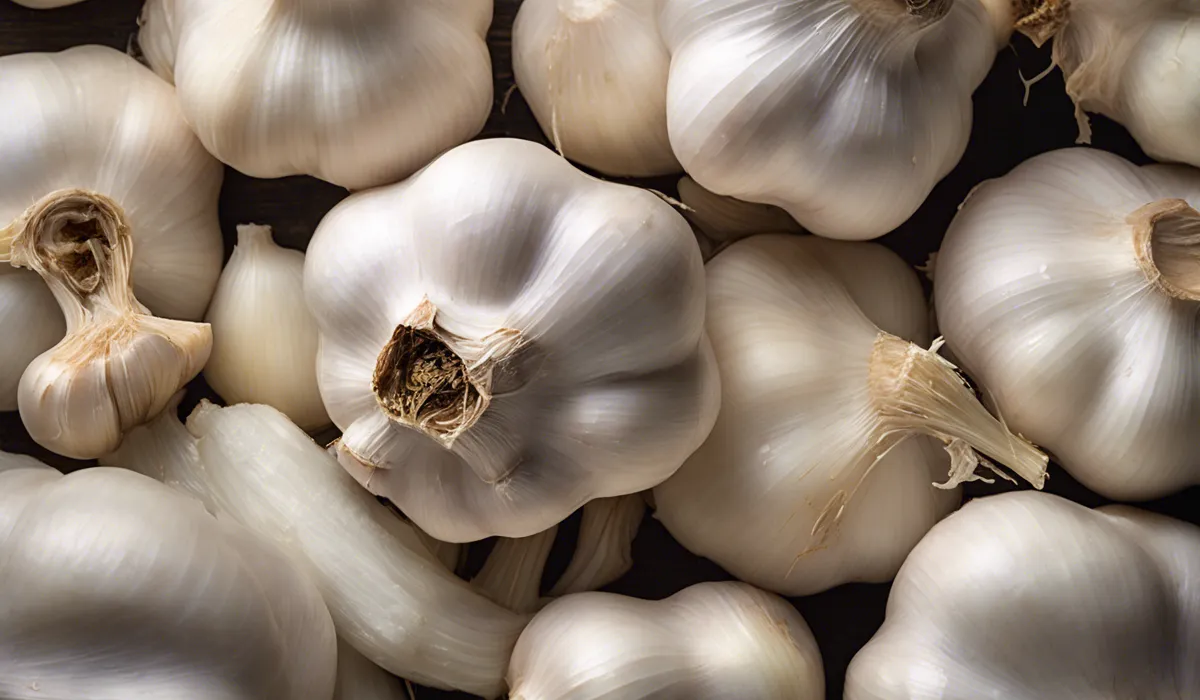To prevent mold on peeled garlic, store it in a clean, airtight container in the fridge. Use it within a week to maintain freshness. For longer storage, submerge the cloves in oil or freeze them.
Proper Storage Techniques

Choosing the Right Container for Peeled Garlic
Selecting an appropriate container is crucial for keeping peeled garlic fresh and mold-free. Opt for a clean, airtight container that does not allow moisture or air to penetrate.
Glass jars with tight-sealing lids or plastic containers designed for food storage work well. The container should be just the right size for the amount of garlic you have; too much empty space can lead to excess moisture build-up.
Ideal Temperature and Humidity for Garlic Storage
Garlic thrives in a cool, dry place away from direct sunlight. The ideal temperature for storing peeled garlic is between 32°F (0°C) and 40°F (4°C), with a relative humidity of 60-70%.
These conditions help prevent the growth of mold and maintain the garlic’s quality.
Use of Silica Gel Packets to Control Moisture
To further protect your garlic from moisture, consider using silica gel packets. These small sachets absorb excess moisture and can be placed inside the storage container with the peeled garlic.
They are especially useful in climates with high humidity or if your refrigerator tends to hold moisture. Replace the packets as directed to ensure effectiveness.
Refrigeration vs. Room Temperature Storage
While unpeeled garlic can be stored at room temperature, peeled garlic should be refrigerated to prevent mold growth.
The cooler temperature of the refrigerator slows down the decomposition process and inhibits fungal growth.
Room temperature storage is not recommended for peeled garlic, as it can quickly lead to spoilage and mold.
Garlic Preservation Methods

Freezing Peeled Garlic: Step-by-Step Guide
Freezing is an excellent way to preserve peeled garlic for long periods. To freeze garlic, start by separating cloves and peeling them.
Lay the cloves on a baking sheet and freeze them for an hour before transferring them to an airtight container or freezer bag.
This process, known as flash freezing, prevents the cloves from sticking together. Be sure to label the container with the date, and use the frozen garlic within six months for the best flavor.
Preserving in Oil: Safety Concerns and Best Practices
Preserving garlic in oil can be convenient, but it must be done safely to prevent botulism, a serious foodborne illness.
Always start with sterilized containers and completely submerge the peeled garlic in oil. The garlic-oil mixture should be stored in the refrigerator and used within a week.
For longer storage, freeze the mixture immediately after preparation.
Drying Peeled Garlic: Techniques and Storage
Drying is another method of preserving garlic that inhibits mold growth by removing moisture.
To dry peeled garlic, slice the cloves thinly and place them in a dehydrator or on a baking sheet in an oven set to the lowest temperature.
Once the garlic is crisp and dry, store it in an airtight container away from light and heat. Dried garlic can last for several months when stored properly.
Routine Checks and Maintenance

Regular Inspection of Garlic for Early Signs of Mold
Inspect your stored garlic regularly for any signs of mold, which typically presents as fuzzy growth or discoloration on the cloves.
Early detection is key to preventing the spread of mold to other cloves. If you spot signs of mold, remove and discard the affected cloves immediately to protect the rest.
How to Handle Moldy Garlic Cloves?
If you find moldy cloves, it is essential to handle them carefully to avoid contaminating other food items. Dispose of them in a sealed bag to prevent spores from spreading.
After handling moldy garlic, thoroughly wash your hands and any surfaces or utensils that may have come into contact with the mold.
Cleaning and Maintenance of Storage Containers
Regular cleaning of your garlic storage containers is vital to prevent mold growth. After each use, wash the containers with hot, soapy water, and dry them completely before storing garlic again.
This practice eliminates any residual moisture or spores that could lead to mold.
Rotation and Usage Tips to Prevent Long-Term Storage
To minimize the risk of mold, use peeled garlic promptly and avoid long-term storage when possible.
Rotate your stock by using the oldest garlic first, and only peel or purchase what you can use within a short period.
This practice, known as first-in, first-out, ensures that garlic does not sit unused for extended periods, which can lead to spoilage.
FAQs About Preventing Mold on Peeled Garlic
How should peeled garlic be stored to prevent mold?
To prevent mold, store peeled garlic in a clean, airtight container in the refrigerator.
How long can peeled garlic stay fresh in the fridge?
Peeled garlic can stay fresh for up to a week when stored properly in the fridge.
Is it safe to store peeled garlic in oil?
Yes, for longer storage, peeled garlic can be submerged in oil, but it must be refrigerated and used within a week to prevent the risk of botulism.
Can peeled garlic be frozen to prevent mold?
Yes, peeled garlic can be frozen to prevent mold and extend its shelf life.
What is the best way to freeze peeled garlic?
Freeze peeled garlic by wrapping it tightly in plastic wrap or aluminum foil, or by placing it in a freezer bag or airtight container.
Final Thoughts
To prevent mold on peeled garlic, proper storage is essential. Keep the cloves in a clean, airtight container in the refrigerator and use them within a week.
For extended preservation, you can either submerge the garlic in oil or opt for freezing the cloves.
